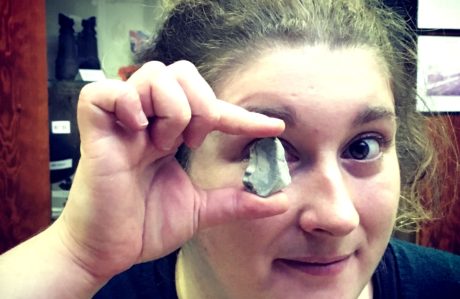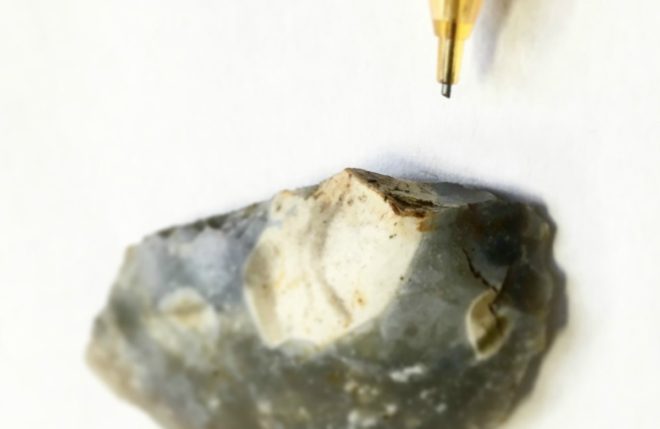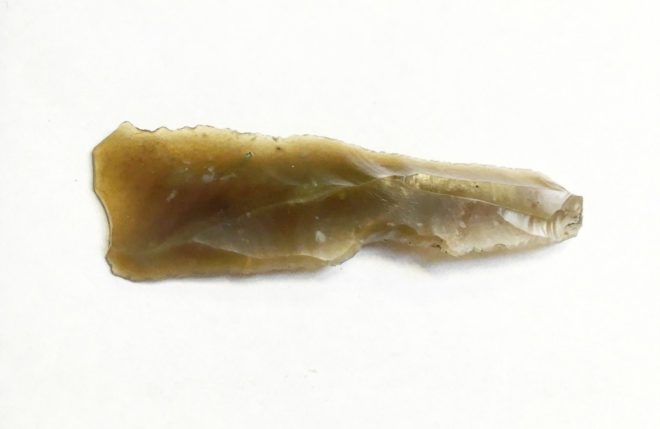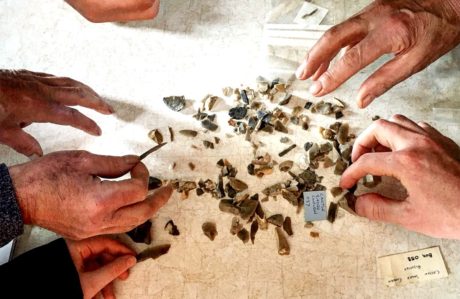
So you’re out fieldwalking, taking part in an archaeological dig, or even just rummaging around in your garden, and you’ve found a piece of flint. But how can you tell if it’s an ancient tool, or just a bit of broken stone?
Identifying flint tools is a mixed bag. In some cases, it’s EASY – a handaxe or arrowhead is pretty unmistakable. But tools like scrapers, flakes and blades can just look like broken bits of stone. Likewise, naturally broken bits of stone can look a bit like scrapers, flakes and blades.
We’ve been out in Spodden Valley with Mid Pennine Arts collecting flint tools and debris left behind by Lancashire’s hunter-gatherers. We showed our Venturers the trick all archaeologists use to tell which are shaped by human hands and which are not, and now we’re showing you too!
Here are the four major diagnostic features you can look for to determine whether or not the piece of flint you’re looking at was actually shaped by human hands:
1. The striking platform
The striking platform is the point at which ye olde prehistoric person took their large chunk of flint (known as a core), and hit it with hammerstone to detach a smaller piece (known as a flake). It’s often a very carefully chosen spot – probably somewhere on a nice, flat surface. If the flake was struck off by human hands, you should be able to see a remnant of the striking platform at the top of the flake.
2. The bulb of percussion
Immediately below the striking platform, on the smooth side of the flake, you should be able to see a small, round bulge. This is where the energetic shock forces the initial crack that forms at the point of contact to bulge outwards leaving a distinct bulb on the flake as it breaks away from the core – kind of like the epicenter of an explosion.
3. Ripples
Radiating out from the bulb of percussion, you should be able to see what look like ripples on a pond. Sometimes the ripples are easier to feel than to see, so your run your thumb down the smooth side of flake until you can feel them.
4. Retouching
Retouching is the process of taking a raw flake, and careful chipping away at the edges to make it into a tool, or to re-sharpen an already blunted tool. The result is that the edges can look a bit serrated done to actually make the tool a sawing item, but simply to hone and sharpen the tool. Retouching could be done as often as needed to sharpen the tool.
Now it’s over to you! Click here to take a look through some of our finds and see if you can identify the diagnostic features. Can you determine which ones are flints shaped by human hands, and which ones are just flints?





